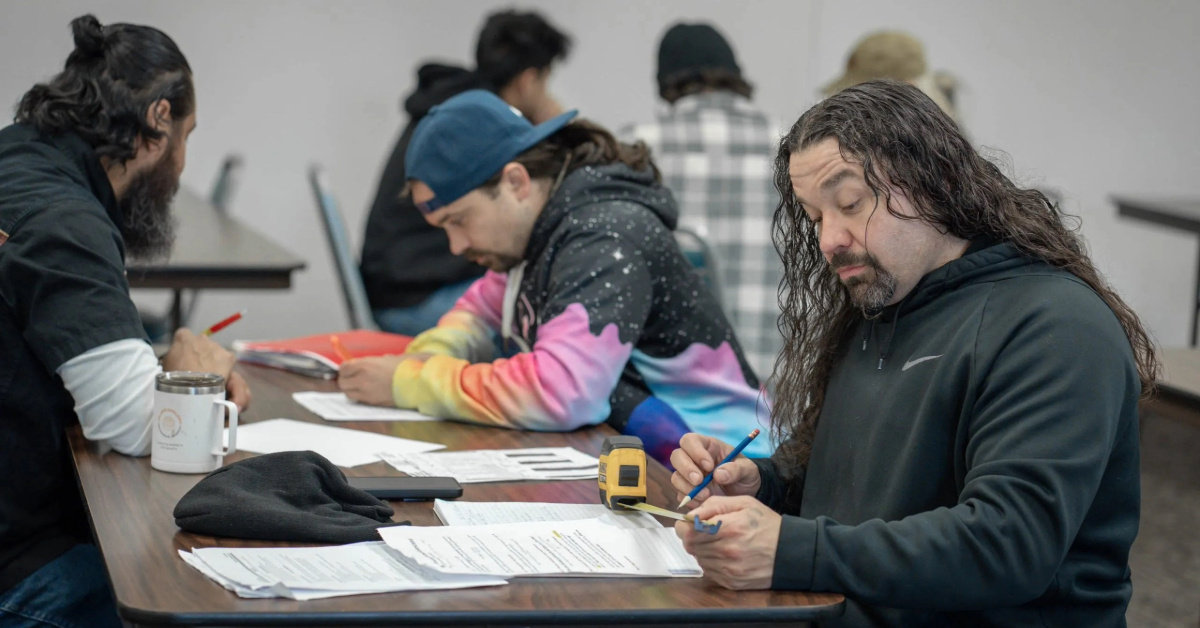
Jul 4, 2024 2:36:32 PM
by Steven Yoder
ALBANY, Ore. – It’s 7:15 on a cold gray Monday morning in May at Linn-Benton Community College in northwestern Oregon. Math professor Michael Lopez, in a hoodie and jeans, a tape measure on his belt, paces in front of the 14 students in his “math for welders” class. “I’m your OSHA inspector,” he says. “Three sixteenths of an inch difference, you’re in violation. You’re going to get a fine.”
He’s just given them a project they might have to do on the job: figure out the rung spacing on an external steel ladder that attaches to a wall. Thousands of dollars are at stake in such builds, and they’re complicated: Some clients want the fewest possible rungs to save money, others a specific distance between steps. To pass inspection, rungs must be evenly spaced to within one sixteenth of an inch, the top rung exactly flush with the top of the wall.
The exercise could be an algebra problem, but Lopez gives them a six-step algorithm that doesn’t use algebraic letters and symbols. Instead, they get real-world industry variables: tolerances, basic rung spacing, wall height.
Lopez breaks the class into five teams. Each team is assigned different wall heights and client specs, and they get to work calculating where to place the rungs. Lopez will inspect each team’s work and pass or fail the job.
Math is a giant hurdle for most community college students pursuing welding and other career and technical degrees. About a dozen years ago, Linn-Benton’s administration looked at their data and found that many students in career and technical education, or CTE, were getting most of the way toward a degree but were stopped by a math course, said the college’s president, Lisa Avery. That’s not unusual: Up to 60 percent of students entering community college are unprepared for college-level work, and the subject they most often need help with is math.
The college asked the math department to design courses tailored to those students, starting with its welding, culinary arts and criminal justice programs. The first of those, math for welders, rolled out in 2013.
More than a decade later, welding department instructors say that math for welders has had a huge impact on student performance. Since 2017, 93 percent of students taking it have passed, and 83 percent have achieved all the course’s learning goals, including the ability to use arithmetic, geometry, algebra and trigonometry to solve welding problems, school data show.
Two years ago, Linn-Benton asked Lopez to design a similar course for its automotive technology program; they began to offer that course last fall.
Math for welders changed student Zane Azmane’s view of what he could do. “I absolutely hated math in high school. It didn’t apply to anything I needed at the moment,” said Azmane, 20, who failed several semesters of math early in high school but last year got a B in the Linn-Benton course. “We actually learned equations I’m going to use, like setting ladder rungs,” he said.
Steven Yoder is a freelance journalist who covers education, criminal justice, business, and more. He is based in Woodstock, New York. His work has appeared in The American Prospect, Salon, Reason, VICE and The Washington Post, as well as in The Hechinger Report.
The story you tell yourself about your own math ability tends to become true. This isn’t some Oprah aphorism about attracting what you want from the universe. Well, I guess it kind of is, but...
If you have a child with disabilities, you’re not alone: According to the latest data, over 7 million American schoolchildren — 14% of all students ages 3-21 — are classified as eligible for special...
The fight for educational equity has never been just about schools. The real North Star for this work is providing opportunities for each child to thrive into adulthood. This means that our advocacy...
Your donations support the voices who challenge decision makers to provide the learning opportunities all children need to thrive.
Ed Post is the flagship website platform of brightbeam, a 501(c3) network of education activists and influencers demanding a better education and a brighter future for every child.
© 2020–2024 brightbeam. All rights reserved.
Leave a Comment